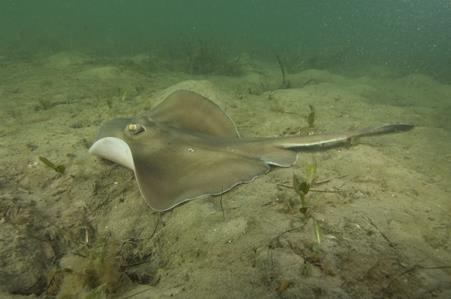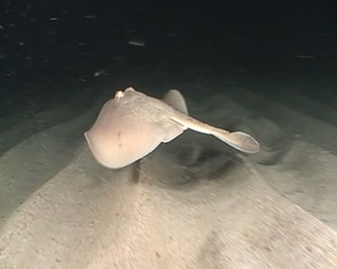General Description
Disc smooth, somewhat rhomboidal in shape with a broadly triangular fleshy snout; tail long, flattened near base, with prominent skin folds along the sides, a deepish caudal fin and a long slender spine; dorsal fin absent. Pale grey above with a variable number of small, distinctive pale, regularly-arranged spots, each with a darker border. Underside pale. To 57 cm.
Biology
These stingarees feed mainly on crustaceans and polychaete worms. Females give birth to up to 6 pups. They are taken in commercial trawls, although seldom marketed. The serrated spine is venomous and can inflict a very painful wound.
Habitat
Sandy bottoms in bays, harbours and along the coast, to a depth of 150 m.
Soft substrates
Distribution guide
Southern Australia.
Species Group
Sharks and rays › Stingrays, stingarees and allies
Depth
Shallow (1-30 m)
Deep ( > 30 m)
Water Column
Max Size
57 cm
Diet
Carnivore
Harmful
Venomous barb on the tail can cause a painful injury.
Commercial Species
No
Global Dispersal
Native to Australia
Conservation Status
- DSE Advisory List : Not listed
- EPBC Act 1999 : Not listed
- IUCN Red List : Least Concern








